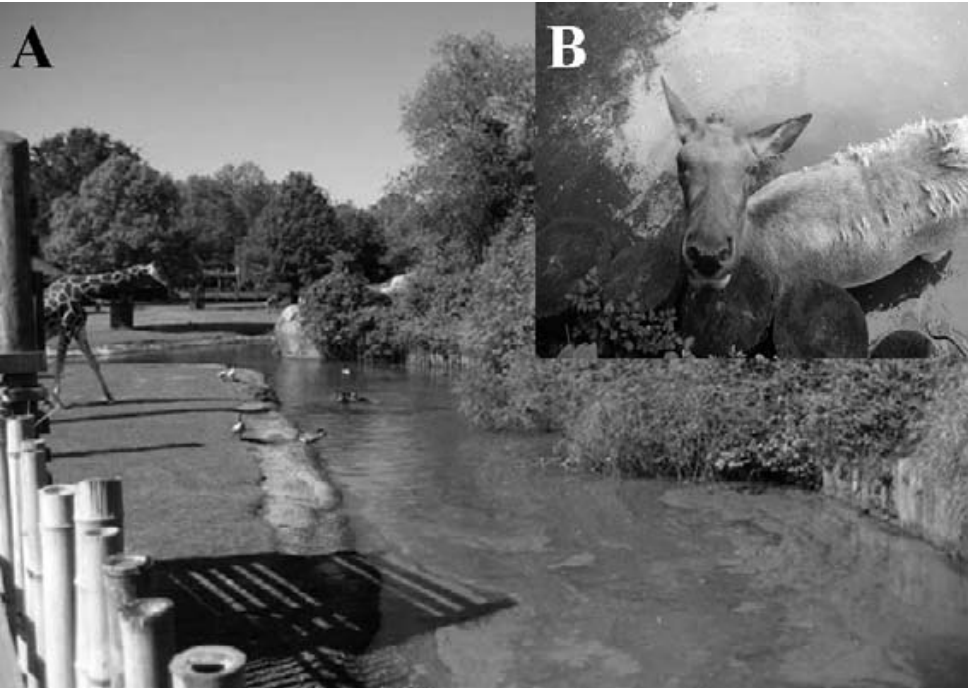Keyword: hepatotoxin

Doster, E., M. F. Chislock, J. F. Roberts, J. J. Kottwitz, and A. E. Wilson. 2014. Recognition of an important water quality issue at zoos: prevalence and potential threat of toxic cyanobacteria. Journal of Zoo and Wildlife Medicine 45(1):165-168.
Abstract
Zoo animals may be particularly vulnerable to water sources contaminated with cyanobacterial toxins given their nonvoluntary close association with this resource. However, the prevalence and potential threat of toxic cyanobacteria in this setting are unknown. Several otherwise unexplained yellow-bellied slider (Trachemys scripta scripta) deaths were documented in a zoo moat with recurring blooms of toxic Microcystis aeruginosa. Furthermore, an extremely high and potentially lethal concentration of the hepatotoxin microcystin (166 ng/g) was found in the liver of a necropsied turtle that died in this moat. A subsequent monthly survey of water quality revealed detectable concentrations of microcystin in all moats (0.0001 to 7.5 μg/L), with moats higher than 1 μg/L being significantly higher than the threshold for safe drinking water recommended by the World Health Organization. These results demonstrate that cyanobacterial blooms are an important water quality issue in zoos, and future research is necessary to identify potential associations among water quality, zoo animal health, and moat management strategies.
Wilson, A. E., D. C. Gossiaux, T. O. Höök, J. P. Berry, P. F. Landrum, J. Dyble, and S. J. Guildford. 2008. Evaluation of the human health threat associated with the hepatotoxin, microcystin, in the muscle and liver tissues of yellow perch (Perca flavescens). Canadian Journal of Fisheries and Aquatic Sciences 65(7):1487-1497.
Abstract